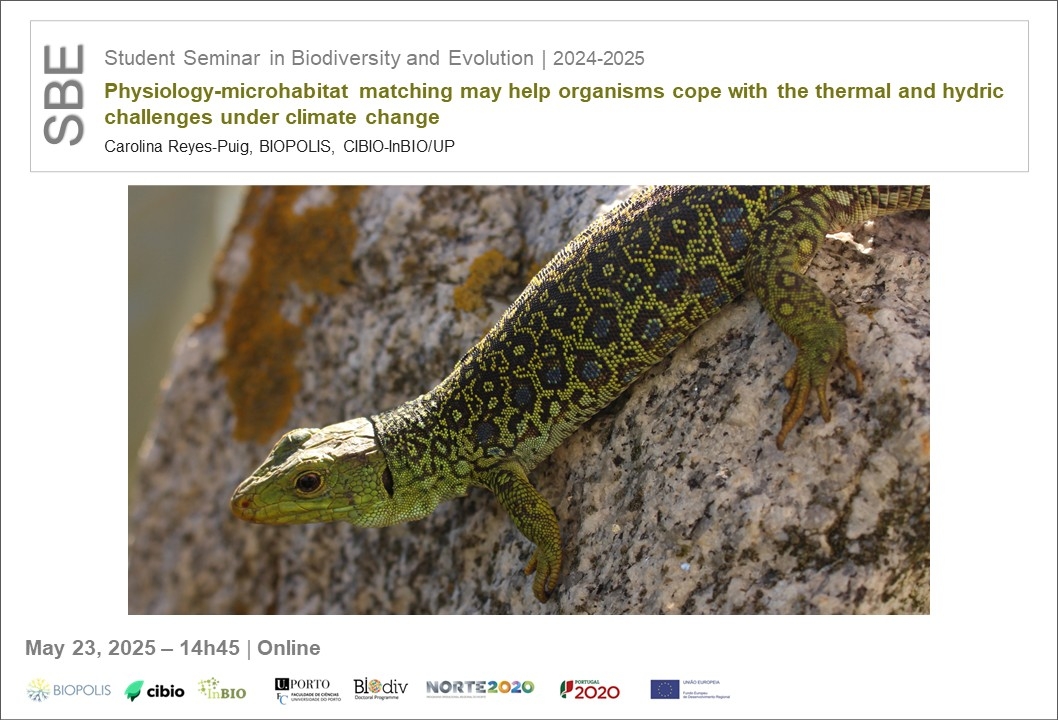Physiology-microhabitat matching may help organisms cope with the thermal and hydric challenges under climate change
23 May 2025 - Carolina Reyes-Puig, BIOPOLIS, CIBIO-InBIO/UP | 14h45 | Online

STUDENT SEMINAR IN BIODIVERSITY AND EVOLUTION
[Host: Antigoni Kaliontzopoulou, Applied Phylogenetics - AP]
Zoom Link: https://videoconf-colibri.zoom.us/j/99764286136
Climate change is impacting biodiversity, especially ectotherms, which are highly vulnerable due to their dependence on external environmental conditions. Microhabitats can provide refuge and mitigate impacts like water and heat stress. Using a mechanistic modelling approach, we assessed how microhabitat variability and physiological traits influence lizards’ activity, preferred temperature, shade selection, and water loss in northern Portugal. Microhabitats were classified using high-resolution geospatial data, and biophysical models were applied to simulate organismal responses under current and future climate scenarios (+2°C and +4°C). The NicheMapR microclimate model was calibrated with field data, and steady-state ectotherm models were used to extract physiological responses. Results showed differences between species. Timon lepidus, the larger species, exhibited higher foraging and basking activity in open rocky habitats, while Lacerta schreiberi relied on shaded, vegetated areas and experienced higher size-corrected water loss. Terrain properties such as slope and aspect influenced responses, with both species foraging more in low-slope areas. Shade selection and water loss were higher on steeper slopes and in north and west facing aspects for L. schreiberi. Climate projections indicate increased activity time under warming, but at a cost of higher water loss and shade needs, particularly for L. schreiberi. These findings emphasize the importance of microhabitats conservation as thermal refuges under climate change.
I am an Ecuadorian herpetologist, researcher at the Universidad San Francisco de Quito (USFQ, Ecuador). I am the curator of the Vertebrates Section of the Zoology Museum at USFQ. My PhD work focuses on exploring how body size influences variation in other phenotypic traits and the ecology of ectotherms. The aim is to understand the role of body size in diversification, coexistence, and vulnerability to climate change. To achieve this, I use an integrative approach that combines empirical, comparative, and mechanistic modeling data. Other of my research interests include taxonomy, systematics, and conservation of small Neotropical vertebrates, with a particular focus on the spatial analysis of species distribution models and priority conservation areas.
[Host: Antigoni Kaliontzopoulou, Applied Phylogenetics - AP]
Zoom Link: https://videoconf-colibri.zoom.us/j/99764286136